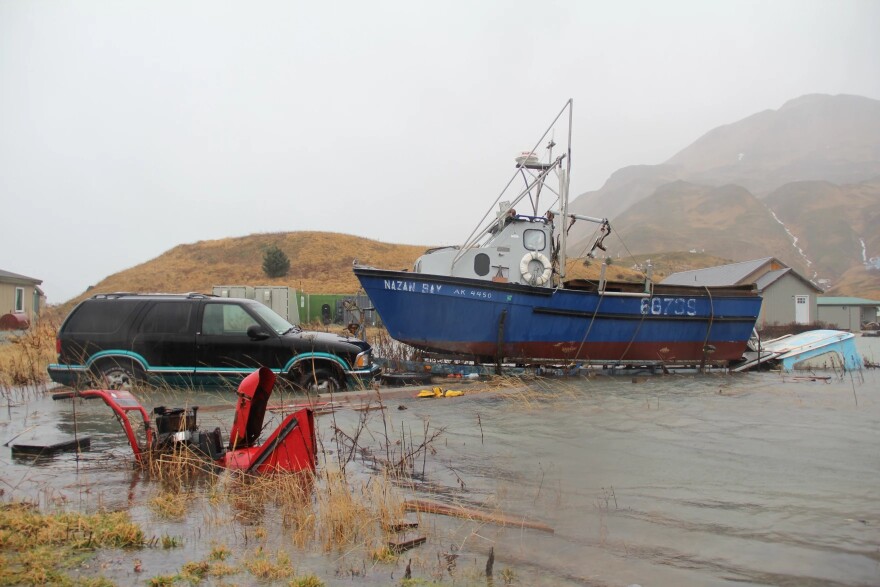Gussie Dushkin and Brian Hatch's house is in downtown Unalaska, near Unalaska Lake. Dushkin has lived in the house for about 40 years, and although she said flooding isn’t anything new, she’s never seen the lake this full.
“This happens like every three years … when it gets really heavy rain, but not quite this high,” Dushkin said. “I'm a little nervous because this is the highest it's been, ever.”
A typical December on the island brings about six inches of rain, according to the National Weather Service, but Unalaska has already received more than 10 inches this month. If the Aleutian community didn’t receive another drop of rain for the rest of the month, this would still be the ninth rainiest December on record.
But with a few days left and more rain in the forecast, this December is likely to surpass that.
Michael Lawson, a meteorologist with the National Weather Service, said an atmospheric river above the Eastern Aleutians acted as a funnel to allow warm and rainy weather to move from the south to the north, directly across the region.
“These systems come through, and tap into this moisture and pull it up northward in a really thin stream,” Lawson said. “It's generally not as impactful
Lawson said this particular atmospheric river stretched several hundred miles, approximately from Nikolski to Sand Point, and that it was pinned in place by two high-pressure systems.
“It's kind of pivoting overhead, as low pressure systems work their way up along it, and just continues to bring constant rain and wind,” he said.
Despite the undue weather, the City of Unalaska did not receive excessive physical damage. Mudslides on Ballyhoo and Summer Bay Roads led to closures, and local seafood processing plant UniSea relocated some of its residents, but the city largely managed the storm without much ado.
Assistant City Manager Bil Homka led the city’s Emergency Operations Center, and he said the conditions did not meet the state statute for a declaration of emergency.
Although there was some property damage in the areas around Lake Drive, and the Dutch Harbor Spit and Front Beach were affected by high water, Homka said Unalaska did not receive the kind of citywide damage that would lead to an emergency declaration.
The Qawalangin Tribe of Unalaska offered to move tribal members into hotel rooms if their homes flooded. Two people accepted the offer, but most opted to remain in their homes, including Gussie Dushkin.
“What would it take for me to leave?” Dushkin said. “The water would be having to come into my house in order for me to walk away from it.”
The storm finally broke on Dec. 22, after nine days of nearly constant rain, making room for a cold front that brought the city a white Christmas.
But the respite was short-lived and rain started again several days later.
As the year's end approaches, the forecast calls for more rain, which the National Weather Service says could be “heavy at times.”

